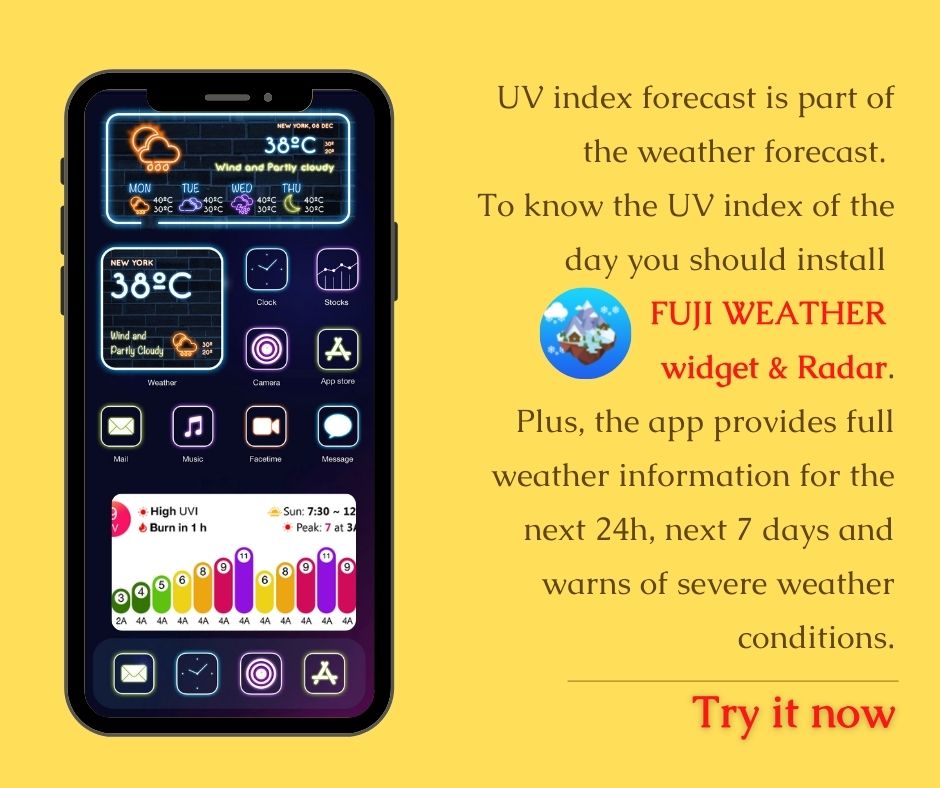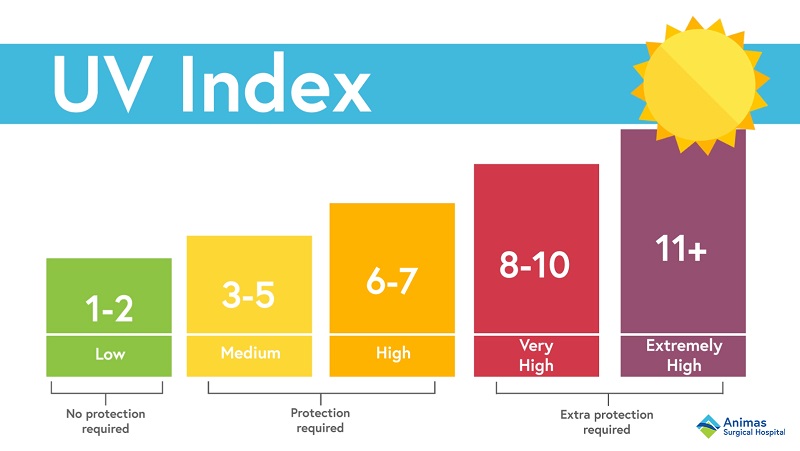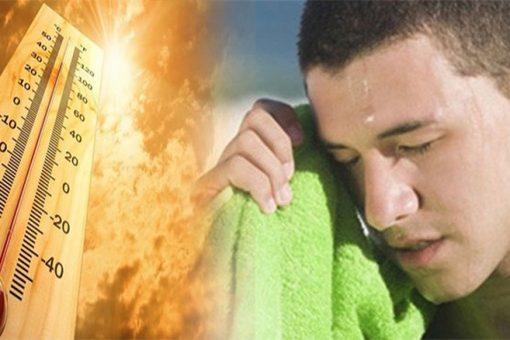Most types of skin cancer are caused by excessive exposure to ultraviolet (UV) rays. Most of this exposure comes from sunlight, but some can come from man-made sources, such as tanning beds and sunlamps. People who get too much exposure to ultraviolet (UV) rays are at higher risk of skin cancer.
The main types of UV rays that can affect the skin include UVA rays and UVB rays. UVB rays have more energy and are a more powerful cause of at least some types of skin cancer, but both UVA and UVB rays can damage the skin and cause skin cancer. There are no safe UV rays.
What affects UV exposure?
The power of the solar UV rays that reach the ground depends on several factors, such as:
- Time of day: UV rays are most intense during the noon hours, between 10:00 a.m. and 4:00 p.m.
- Season of the year: UV rays are most powerful during the spring and summer months. This is a less important factor near the equator.
- Distance from the equator (latitude): UV exposure decreases as you move away from the equator
- Altitude: More UV rays reach the ground at higher elevations.
- Cloud formation: the effect of clouds can vary, but it is important to know that UV rays can reach the ground, even on a cloudy day.
- Reflection from surfaces: UV rays can bounce off surfaces such as water, sand, snow, or pavement, leading to increased UV exposure.
UV index
The United States National Weather Service and the Environmental Protection Agency (EPA) have developed the UV index, which gives you an idea of how powerful UV light is in your area on a given day, on a scale of 1 to 11+. A higher number means a higher risk of UV exposure and a greater chance of sunburn and skin damage that could ultimately lead to skin cancer.
The UV index is part of many weather forecasts around the country. Additional information on the UV Index, as well as the local UV Index forecast, can be found on the EPA website at www.epa.gov/sunsafety/uv-index-1.
Other factors that affect UV exposure
Along with the strength of the rays, the amount of UV exposure you receive also depends on how long your skin is exposed, and whether your skin is protected with clothing or sunscreen.
People who live in areas where they are exposed to strong sunlight year-round have a higher risk of skin cancer. Spending a lot of time outdoors for work or recreation without protecting yourself with clothing and sunscreen increases your risk.
The pattern of exposure can also affect the risk of skin cancer. For example, frequent burns in childhood can increase the risk of some types of skin cancer many years or even decades later.
It is also important to understand that some people are more prone to skin damage from the sun, for a variety of reasons.
Protect yourself from the sun
Some people only think about sun protection when they spend a day at the lake, the beach or the swimming pool (pool). However, sun exposure accumulates day by day, and occurs every time you are in the sun. Even though sunlight is the main source of UV rays, you don’t have to avoid sunlight entirely. Also, it would not be a good idea to stay indoors if this prevents you from being active, as physical activity is important for good health. However, getting too much sunlight can be harmful. There are some simple steps you can take to limit your UV exposure.
Simply staying in the shade is one of the best ways to limit UV exposure. If you are spending time outdoors, “Put on, pack on, put on and wear!” is a popular phrase that can help you remember some of the key steps you can take to protect yourself against UV rays:
- Put on a shirt!
- Put on sunscreen!
- Put on a hat!
- Wear sunglasses to protect your eyes and the skin around them!
Look for the shade
An obvious, but very important way to limit UV exposure is to avoid being outside in direct sunlight for a long period of time. This is particularly important between 10:00 a.m. and 4:00 p.m. when ultraviolet light is the strongest. If you are not sure of the intensity of the sun’s rays, do the shadow test: if the shadow is smaller than you, the sun’s rays are the most intense, and it is important that you protect yourself.
UV rays reach the ground year-round, even on cloudy days or with little sun, although the intensity of UV rays can vary, depending on many factors (see information above). Be especially careful when on the beach or in areas where there is snow, as sand, water, and snow reflect sunlight, increasing the amount of UV radiation you receive. UV rays can also pass through the surface of the water so you can still get burned even if you are in the water and feel cool.
Some UV rays can also pass through windows. Typical window panes in cars, homes, and offices block the most UVB rays, but not the least amount of UVA rays. So even when you don’t feel like you’re burning, your skin may be taking some damage. Polarized lenses help block more UVA rays, although this depends on the type of tint used on the glass. (If you have tinted car windows, check your local laws, as some states have regulations.) UV radiation coming through window glass probably doesn’t pose a great risk to most people unless they spend a lot of time near a window in direct sunlight.
Protect your skin with clothing
When you are outdoors, wear clothing that covers your skin. Clothing provides different levels of protection against UV rays. On the other hand, long-sleeved shirts, long pants, and long skirts cover most of the skin and offer maximum protection. Dark colors generally provide more protection than light colors. Heavier weave fabrics offer better protection than looser weave fabrics. Also, dry clothing generally protects better than wet clothing.
Keep in mind that covering up does not block all UV rays. If you can see light through fabric, UV rays can pass through it as well.
Many companies today make clothing that is lightweight and comfortable while protecting against UV exposure even when wet. These fabrics tend to be narrower weave, and some have a special coating that helps absorb UV rays. This clothing with sun protection may have a label that indicates the value of the ultraviolet radiation protection factor (UPF), the level of protection that the garment provides against the sun’s ultraviolet rays (on a scale of 15 to 50+ ). The higher the UPF, the greater the protection against UV rays.
Some newer products that are used as washing machine detergents can increase the UPF value of the clothes you own. These add a layer of UV protection to your clothing without altering its color or texture. This can be helpful, but it’s not exactly clear how much it helps protect you from UV rays. Therefore, it is still important to follow the other steps presented in this article.
Put on sunscreen
Sunscreen is a product that you apply to your skin to offer protection against UV rays. However, it is important to know that sunscreen is just a filter that does not block all UV rays. Sunscreen should not be used as a way to extend the time you spend in sunlight. Even with the proper use of sunscreen, some UV rays are still received. Because of this, sunscreen should not be considered your first line of defense. Consider sunscreen as part of your skin cancer protection plan, especially if you don’t have shade and protective clothing as your first choices.
Sunblocks are available in many forms (lotions, creams, ointments, gels, sprays, wipes, and lip balms, to name a few).
Some cosmetic products, such as moisturizers, lipsticks, and foundations, are considered sun protection products if they contain sunscreen. Certain cosmetic products contain sunscreen, although you should check the information on the label (makeup including lipsticks that do not indicate sunscreen does not provide protection from the sun).
Read labels
When selecting a sunscreen, be sure to read the label. The use of products with broad-spectrum protection (against UVA and UVB rays) and with a sun protection factor (SPF) of 30 or higher is recommended.
Sun Protection Factor (SPF): The sun protection factor number is the level of protection that sunscreen provides against UVB rays, which are the main cause of sunburn. A higher SPF number means more protection against UVB rays (although it does not indicate anything about protection against UVA rays) For example, when a sunscreen with SPF 30 is applied correctly, you get the equivalent of one minute of UVB rays per every 30 minutes spent in the sun. Therefore, one hour in the sun with SPF 30 sunscreen is the same as spending two minutes totally unprotected from the sun. People often don’t apply enough sunscreen, so they actually get less protection.
Sunblocks identified with sun protection factors (SPF) of up to 100 or more are available on the market. Higher numbers mean more protection, but many people don’t understand the SPF scale. Sunscreen with an SPF of 15 filters approximately 93% of UVB rays, while sunscreen with an SPF of 30 filter about 97%. Likewise, sunscreen with an SPF of 50 filter about 98% and sunscreen with an SPF of 100 about 99%. The higher the number, the smaller the difference. There is no sunscreen that offers total protection.
In the United States, sunscreens with an SPF less than 15 now have to include a warning on the label stating that the product has been shown to only help prevent sunburn, not skin cancer or premature skin aging.
Broad Spectrum Sunscreen – Sunscreen products can only be labeled “broad-spectrum” if they have been tested and shown to protect against UVA and UVB rays. Some of the ingredients in the blockers that help protect against UVA rays include avobenzone (Parsol 1789), zinc oxide, and titanium dioxide.
Only broad-spectrum sunscreen products with an SPF of 15 or higher can claim to help protect against skin cancer and premature skin aging when used as directed and with other sun protection measures.
Water Resistant Sunscreen: Sunscreens are not allowed to state on the label that they are “water resistant” or “sweat-resistant” because these terms can be misleading. Sunscreen can claim to be “water-resistant,” but they have to indicate whether they protect the skin for 40 to 80 minutes of swimming or sweating, based on studies.
Expiration Dates: Check the expiration date of the sunscreen to make sure it is still in effect. Most sun products are good for at least 2 to 3 years, although you may need to shake the container to ensure mixing of the ingredients. Sunscreens that have been exposed to heat for a long time, such as those stored in a compartment or trunk of a vehicle during the summer, maybe less effective.
Make sure you apply sunscreen correctly
Always follow the directions on the label. Most experts recommend applying a generous amount of sunscreen. When applying, pay close attention to your face, ears, neck, arms, and any other areas of the body that are not covered by clothing. And do not forget the lips; There are also lip balms with sun protection. If you are going to use bug spray or makeup, apply sunscreen first.
Ideally, about an ounce (about 30 grams or about the measure of a small glass or enough to fill the palm of the hand) should be used to cover the arms, legs, neck, and face of the average adult. . Sunblocks should be reapplied at least every two hours to maintain protection. Sunscreens can become less effective when you sweat or swim and then wipe them off with a towel. Therefore, protectors have to be reapplied more frequently.
Some people might think that if they use sunscreen with a very high SPF, they don’t have to be so careful about how to use it, but this is not true. If you decide to use sunscreen with a very high SPF, keep in mind that this does not mean that you can stay in the sun longer, use less sunscreen, or apply it less often. Always be sure to read the label.
Some sunscreen products can irritate the skin. Many products claim to be hypoallergenic or have been dermatologically tested, but the only way to know if a product will irritate your skin is to try it. A common recommendation is to apply a small amount to the skin of the arm where it flexes (the skin opposite the elbow) for 3 consecutive days. If your skin is not red or tender or itchy, the product may be right for you.
Put on a hat
A hat that has a brim around it of at least 2 to 3 inches is ideal as it protects areas that are often exposed to the intense rays of the sun, such as the ears, eyes, forehead, nose and forehead. scalp. A dark, non-reflective underside on the hat brim can also help reduce the number of UV rays reaching the face from shiny surfaces, such as water. A shaded cap is also recommended (a cap similar to a baseball cap that includes a cloth of approximately 7 inches or 15 centimeters that hangs at the sides and behind the neck) that will provide more protection to the neck. They can usually be found at sporting goods and outdoor activity stores. If you don’t have a shaded cap (or another appropriate hat), you can create one by donning a large scarf or turban under a baseball cap.
A baseball cap protects the front and back of the head, but not the neck or ears, where skin cancers commonly originate. Wicker hats do not offer the protection you get from those made of tightly woven fabric.
Wear sunglasses that block UV rays
UV-blocking lenses are important to protect the delicate area around the eyes, as well as the eyes themselves. Research has shown that spending long hours in the sun without protecting your eyes increases your chances of developing certain eye diseases.
Ideal sunglasses should block 99% to 100% of UVA and UVB rays. Before buying sunglasses, check the label to make sure. Labels that state “UV absorption up to 400 nm”, or “Meets ANSI UV Requirements” mean that the lenses block at least 99% of UV rays. Those whose label indicates that they are of “cosmetic” use block around 70% of the UV rays. If the label does not state so, do not assume the glasses provide any UV protection.
Darker lenses are not necessarily better as UV protection comes from an invisible chemical in or on the lenses, not from the color or darkness of the lenses. Look for an ANSI label.
Large frames and crossed sunglasses tend to protect your eyes more from light coming from different angles. Children need smaller versions of real glasses that protect adults (not toy glasses).
Some brands of eyeglasses and contact lenses now also offer UV protection. But do not assume this to be true unless it is clearly stated on the product label or confirmed with your eye care professional. Of course, glasses come in many shapes and sizes, and the smaller lenses will cover and protect smaller areas. Contact lenses do not cover the entire eye or surrounding areas, so they are not sufficient protection when worn alone.
Protect children from the sun
Children need special attention, as they tend to spend more time outdoors, they can burn more easily, and they may not be aware of the damage caused by exposure to the sun. Parents and caregivers should protect children from excessive sun exposure with the steps outlined above. Covering children as reasonably as possible is particularly important in the sunniest parts of the world. You should develop the habit of using sunscreen on sun-exposed skin for both you and your children whenever you spend time outdoors and may be exposed to a lot of sunlight. Children must be guided about the damage caused by too much sun exposure as they become more independent. If you or your children get burned easily, take extra precautionary measures by covering up, limit sun exposure, and wear sunscreen.
Babies under 6 months should be kept out of direct sunlight and protected from the sun with hats and protective clothing. Sunscreen can be used on small areas of the skin exposed to the sun only if there are not adequate clothing and shade.
Avoid tanning beds and sun lamps
Many people believe that UV rays from tanning beds are not harmful, but this is not true. Sunlamps emit UVA, and also commonly UVB rays. Both UVA and UVB rays can cause long-term skin damage and can contribute to skin cancer. The use of tanning beds has been associated with an increased risk of melanoma, especially if tanning beds were started before the age of 30. Most doctors and health organizations do not recommend the use of tanning beds or sun lamps.
If you want to tan, one option is to use a sunless tanning lotion that can provide the darkest “look” without causing harm. See Is it safe to use tanning pills and other tanning products?
Small UV lamps are also used in nail salons (or at home) to dry some types of nail polish. These lamps emit UVA rays. The amount emitted is much less than that from tanning beds, and the risk of skin cancer from these lamps is believed to be below. Still, to be safe, some expert groups recommend applying sunscreen to your hands before using one of these lamps.
Sun exposure and vitamin D
Vitamin D offers many health benefits. It might even help reduce the risk of some cancers. Your skin produces vitamin D naturally when exposed to the sun. The amount of vitamin D you get depends on many factors, including your age, how dark your skin is, and how strong the sunlight is where you live.
Currently, doctors are not sure what the optimal level of vitamin D is. Much research is being done on this topic. Whenever possible, it is best to get vitamin D from your diet or vitamin supplements rather than from sun exposure, since food sources and vitamin supplements do not increase your risk of skin cancer. Also, they are generally more reliable ways to get the amount of vitamin D you need.






